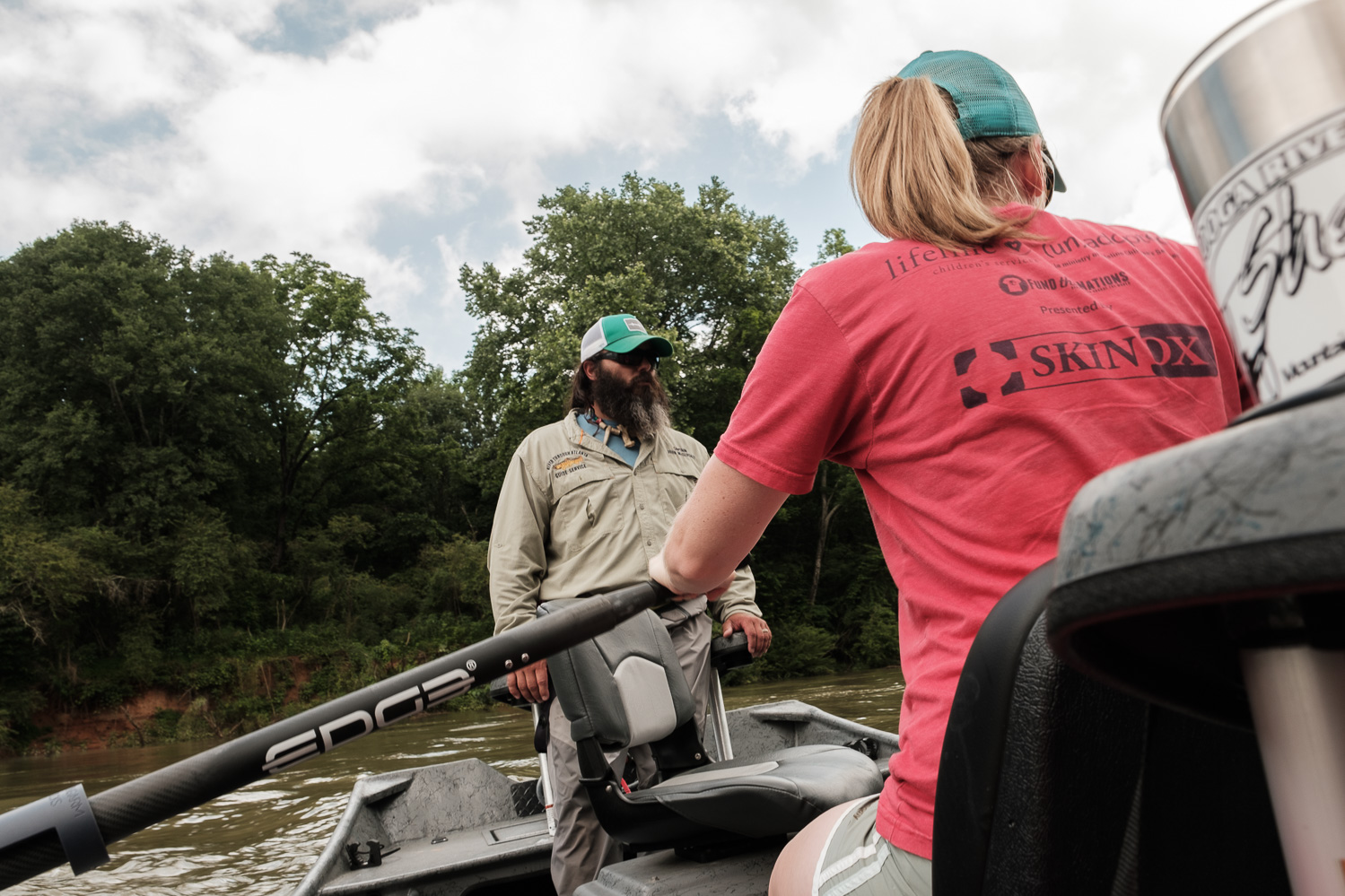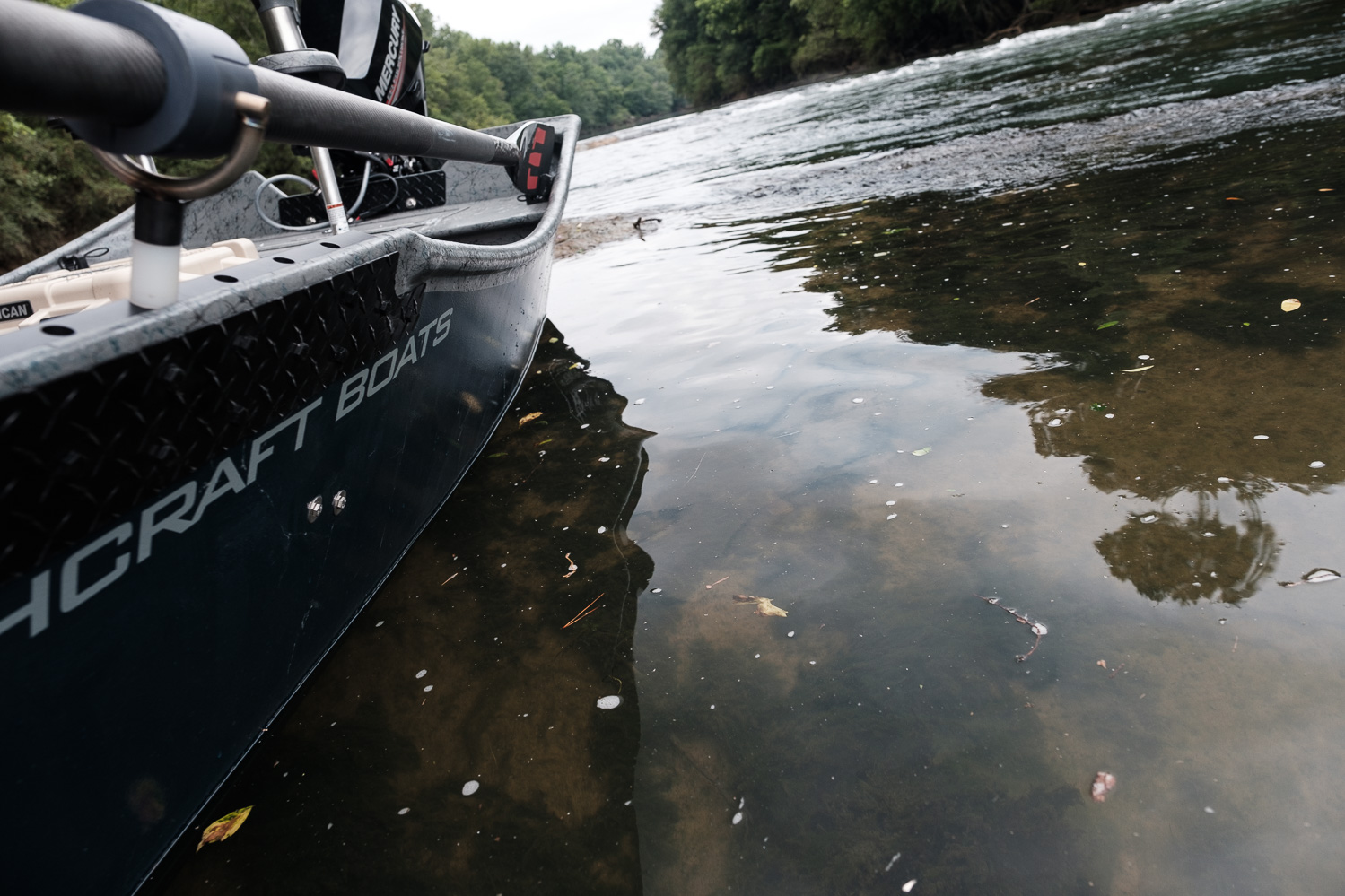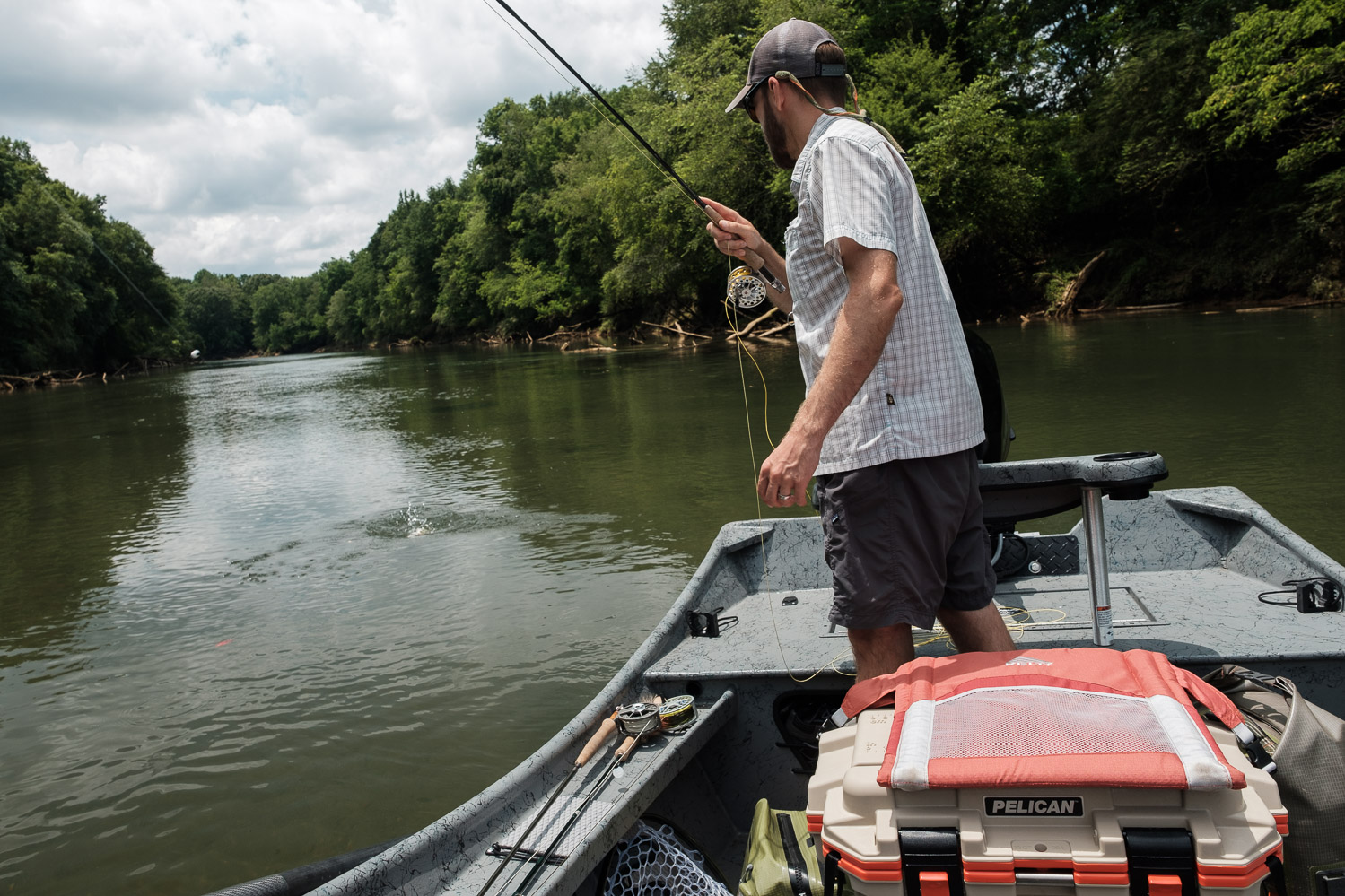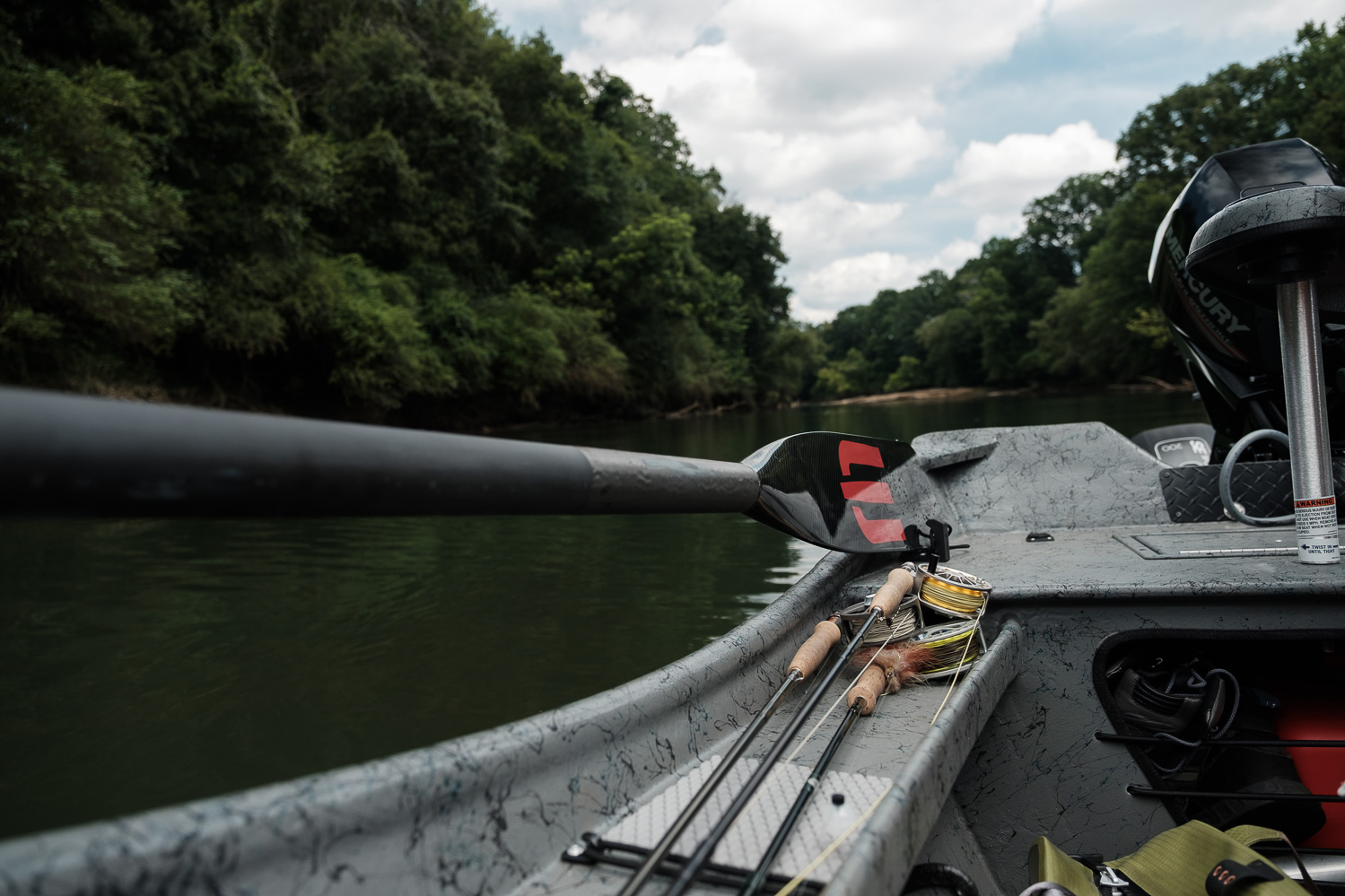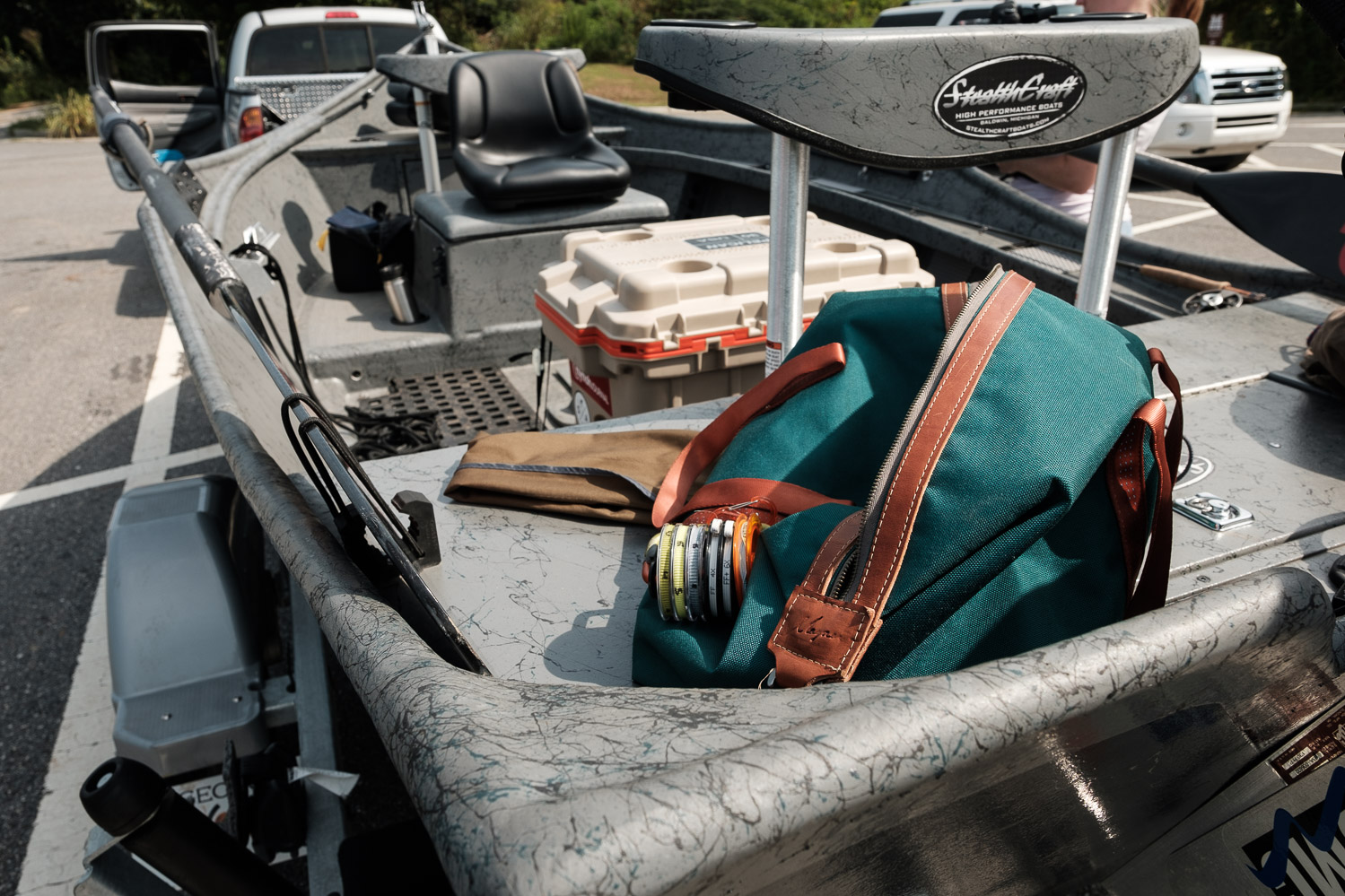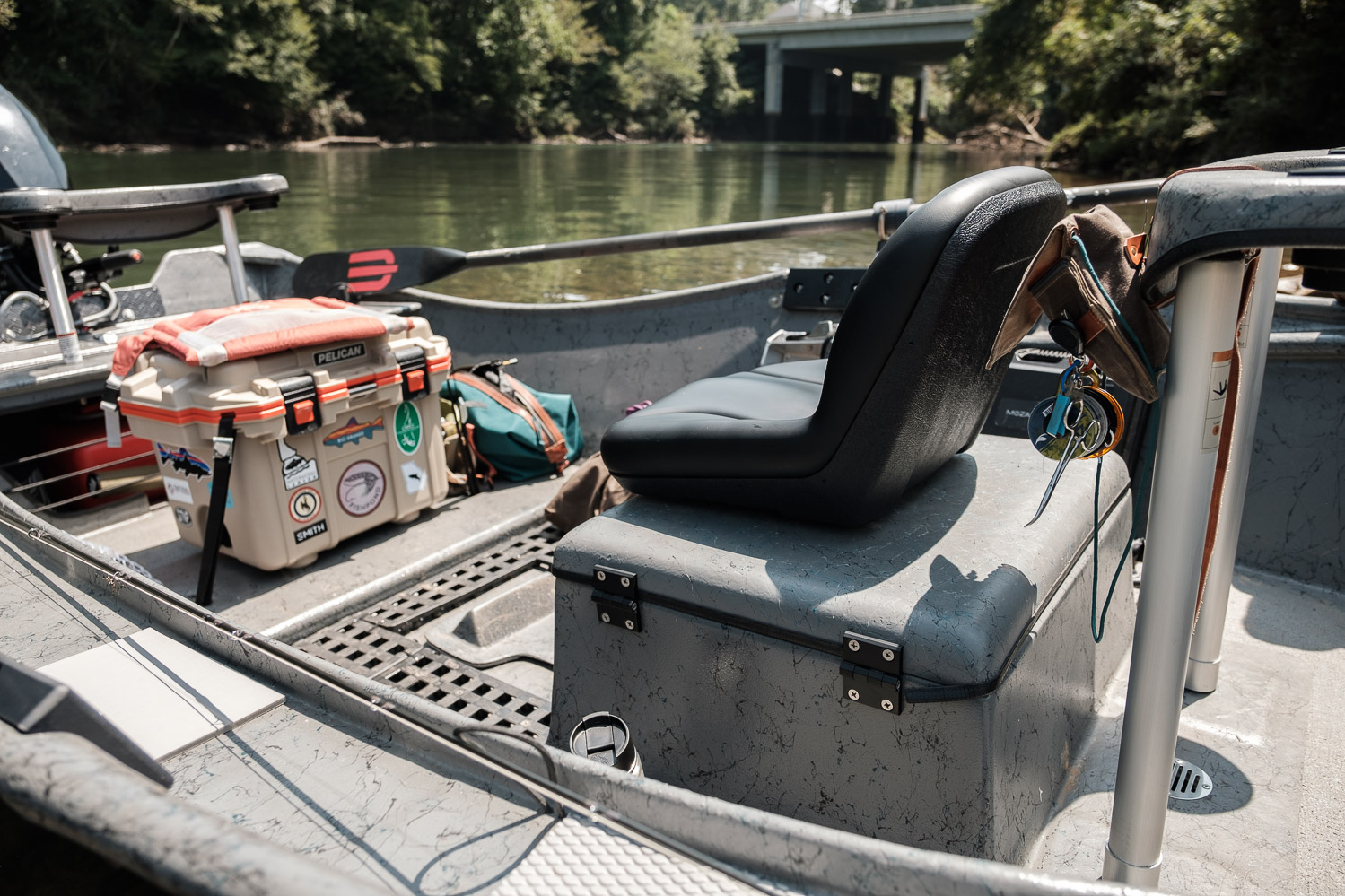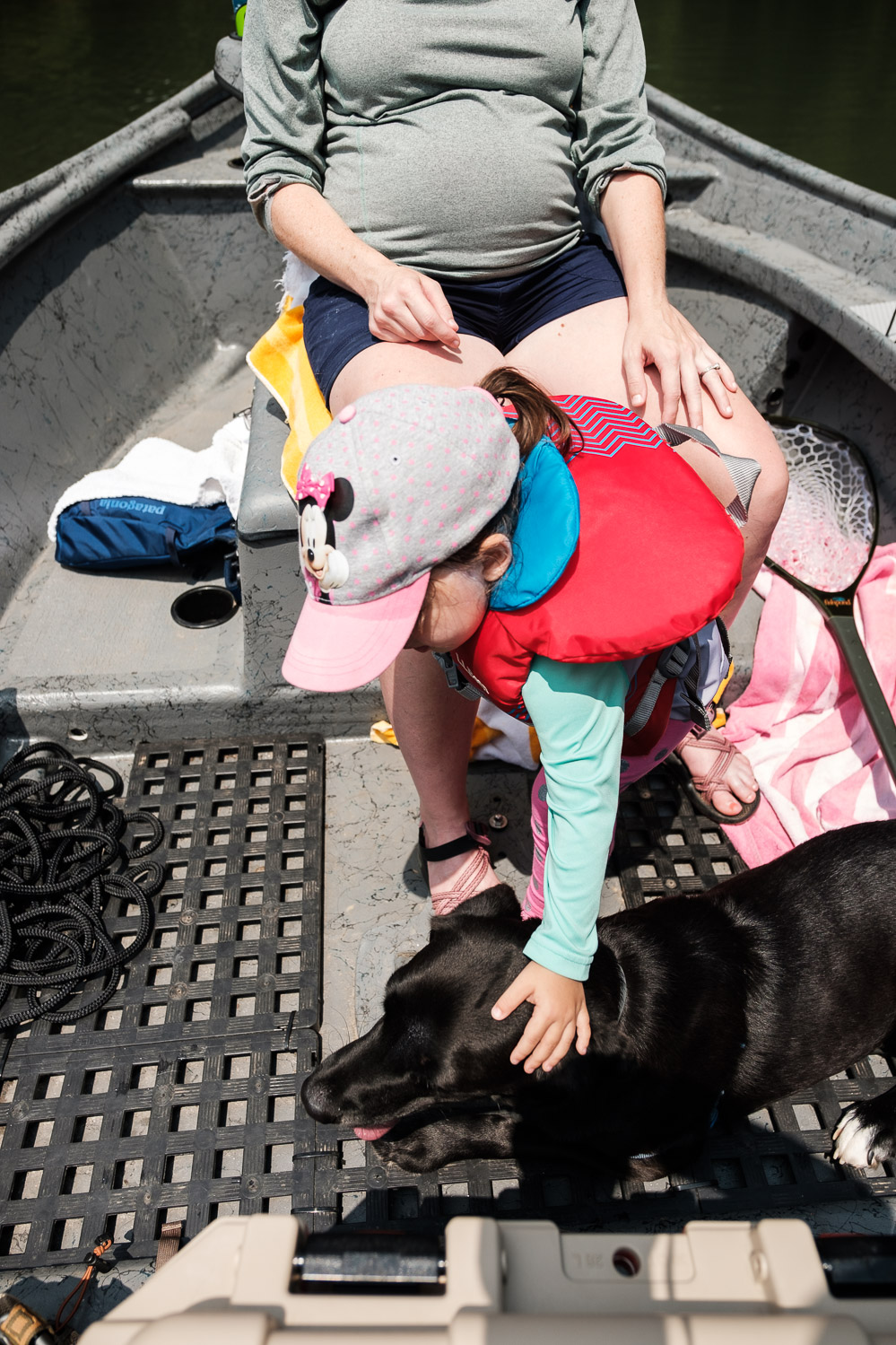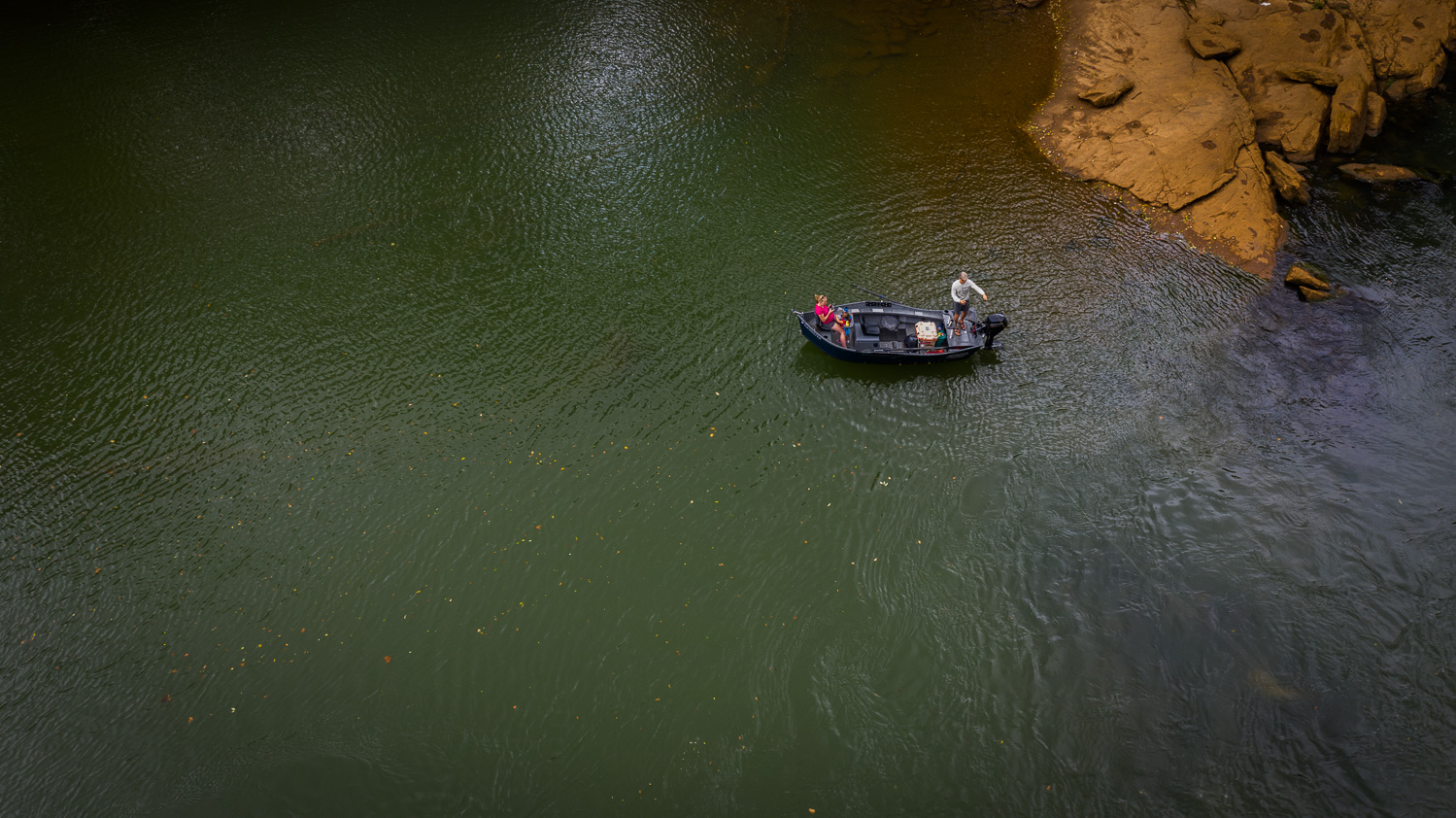Purchasing a Drift Boat - Choosing Which Boat is Best for You
Tips on Choosing Which Drift Boat is Right for You
This will always be a subjective matter, as each fisherman and woman will always have a specific list of needs most important to them when selecting a drift boat. I backed in to my purchase process but in doing so came up with a list of questions to answer that I think will help drive your decision. They are in no particular order, but you should definitely rank them in a way that is most important to you.
Where will you use it most?
What types of water will you be fishing?
How many people do you plan on fishing with?
Is the “rowability” of the boat most important, or it’s versatility? (I’m not so sure you can achieve both, but you can get close).
How much on-boat-storage do you need?
Will you be bringing kids, dogs, etc or will you primarily be fishing with able-bodied adults?
Do you want to save time? (Ie, forego a shuttle service which means you’ll need a power source to get back up river).
Do you think you’ll want a hard-side or raft? High-side or skiff? (This of course depends on answer questions 1 and 2). A raft can take a beating on rocky and shoal-filled rivers but does not row as well and is not as “comfortable.” A high-side traditional drift boat handles whitewater better, in general. A skiff has lower gunwales and is less subjugated to the effects of wind, row like sports-cars, but are not as adept at taking whitewater. These are generalizations, of course, but a good guide to get started if you are new to drift or river boats like I was at the time I made my purchase.
Where will you store your boat?
How much are you willing to pay?
My Personal Experience in Purchasing a Drift Boat
I can safely say I spent well over a year before I made my first purchase. My journey started with my amazing wife. Fly fishing has been a facet of my life ever since we met. Enter a new and demanding career, our first child, home ownership, and adult-life responsibilities and the time spent fly fishing dwindled quickly.
At dinner one evening, we had a heart-to-heart conversation about how important fly fishing is to my being. She already knew this, but a part of me felt restless as my time on the water became less and less and I had not expressed my sentiments to her. As we strategized ways to incorporate fishing and family time, she casually said “maybe we should get a drift boat.” I am pretty sure at that moment I was floating in the clouds with a ridiculous smile on my face.
Doing Research
With the license to purchase a boat, I began my search. As I’ve mentioned in prior posts, I love doing my research before buying stuff. E-commerce and the internet have made it immensely easier to do your homework, but will never replace getting to put your hands on something. I would argue that purchasing a drift boat is much like purchasing a car - it would be a good idea to test drive it before dropping a large sum of money on it.
Unfortunately, “testing” something as large and as specific as a drift boat is not so easy to do. There are not a plethora of boat dealerships out there, not to mention drift boat dealerships. Sure, you could travel to the headquarters of a drift boat company and test their models out, but this is not a cheap or quick venture. The best alternatives are to scour the internet for folks who have gone through it before you and more specifically, own the type of boat you plan on purchasing.
There is a good bit of information out there via blogs, forums, and manufacturer websites. I’d be willing to bet that most shops would be willing to put you in contact with clients in your area who would let you go on a test run. I found a good deal just Googling my specific questions, but there were a handful of websites that had really good forum discussions or blog posts (Itinerant Angler, Midcurrent part 1, part 2, part 3).
Budgets, Brands and Builds
I think it’s a good idea to have a budget that you want to stick to. My buddy Dan had just gone through this purchasing process a year or so before I began my search. He ended up with an Adipose (an awesome skiff) with a small kicker outboard that could be taken on and off easily based on his needs and budget. After all the custom components were added on, the final price was significantly more than the base price. Understand your final tally will be more than the listed base MSRP.
There are several boat builders out there, and I imagine they are all awesome. I’ve chosen to focus on the boats I’ve had personal experience with. When I first started looking, I spoke to folks at Towee at Stealthcraft. Everyone was genuinely friendly and informative and willing to take the time to talk you through their boats. If I had the time and unlimited funds, I would love to row all of them.
My buddy Dan’s Adipose - a beauty and a joy to row
Understand that almost all boat builders start with a base price but offer a plethora of customization options that can quickly rack up. Decide on your budget, look at a few build sheets from builders you are interested in, and see what sticks. I was drawn in by the base price on my particular boat, but had to budget for specific items I wanted (western rod tray, jack plate for outboard, upgraded oars and oar locks, electronics, anchor winch, etc).
My Personal Search
I backed into the steps I’ve listed. Ultimately, I ranked what was most important to me in the following manner.
Primary location of use - the Chattahoochee tailwater is about an hour or so from my house. It is where I cast my first fly and landed my first trout (after 6 months of trying); it is the river that kept me sane in college and beyond, and the river that has shaped my best fishing friendships. I’ll dedicate a post to the awesome and incredible Chattahoochee, but for the purposes of this post, I knew it would be the river I would spend a majority of time fishing with the boat. Being a fairly open tailwater with very little rapids or whitewater where I would be fishing, the options thus boiled down to low-side drift boats, power-drifters, and skiffs.
Shuttle elimination - for me, being able to cut out the shuttle step would save precious time in my balance of fishing and family. I wanted something that did not require a shuttle - thus, I knew I wanted something that could house a decent size motor (on the Hooch, this still meant that low-side drift boats, power-drifters, and skiffs were in the running).
Rowability - I was excited about the prospect of getting to fish more with my wife. She had never rowed a boat to this point. I plan on teaching my girls to row one day too. All this meaning I would need a boat that would row well first (again, all the listed boats remain on the list).
Versatility - while most of my fishing would be done on the Chattahoochee, I had dreams of using the boat on the Georgia inter-coastals, polling for reds, or on warm-water lakes searching for surfacing hybrids or striper or casting to tailing carp. I love fishing for bass as well. Ultimately I figured if I could find a boat that could do all these things (to some extent), and potentially float other tail-waters in the Southeast, I’d be set.
When the four factors above were combined, power-drifter sleds, skiffs, and low-sided drift boats fit the needs of 1 - 3. Versatility was the deciding factor and how I ultimately ended up with the boat I have today (see below).
February 1, 2018
A day that will live in infamy… or more simply, a day that a drift boat became a reality. I headed to the Atlanta Fly Fishing show for the reason so many of us do - to see what new gear is out there, to wander aimlessly and look at all awesome things fishing, to meet folks in the industry (maybe), and, let’s be honest, to get as many awesome stickers as possible.
My wife and I had had our conversation about a drift boat and I had a general idea of what my needs were in a boat, but we had not really put any plans in concrete. As fate would have it, I came across the Stealthcraft booth and the owner, Mike Batke, was there.
I ended up spending an hour with him, talking about various options and walking out to the parking lot where they had a handful of other boats that were not on the show floor. Mike is a stand-up, straight-forward guy who knows his stuff. He’s also a great salesman ;). They had just introduced the 14’ Pintail ATB (All-Terrain-Boat) into their lineup and after talking pros and cons on their various options, we decided this would meet all the criteria I was looking for.
As many companies do, they were offering a Fly Fishing Show discount - while I know it is a marketing and sales tactic, I appreciated the significant discount it offered. The whole drive home I talked with my buddy Adam (who rode with me to the show) and by the time we pulled into the driveway, I had Mike on the line and was giving him my credit card info for a deposit.
Stealthcraft Pintail All Terrain Boat (ATB)
I ultimately went with this boat as it was a hybrid of a traditional drift boat with a transom that is made to house an outboard. Essentially, it’s primarily purpose is to row well and be stable, but can also get up on plane with an appropriate outboard. I went with a 20 HP Mercury on a jack plate that allows it to kick up if the prop hits an obstruction as a poor-man’s jet. (The ATB hull is designed for a prop; the Power Drifter Sled, also made by Stealthcraft, is made for a jet).
The 20 HP is small enough that I can take it off fairly easily if I fish water that does not allow gas-powered motors (although I’ll say I have yet to take it off despite thinking I would). This set up allows me to use it primarily as a fantastic-rowing drift boat on the Hooch or other navigable tailwaters, but also to fish warm water and still water. It obviously does not handle wake and chop like a v-hulled boat, but it’s a working boat and gets the job done.
I have yet to take it to the saltwater, but I’ve heard of guys who do. I’ll report back when I get a chance to run it in the salt (I will probably even try to pole it, though I suspect I will be spinning in circles).
I went with a western guide tray on starboard that I can comfortably stow 2 to 3 rods up to 10’6” without difficulty. I upgraded the oars and oar locks to carbon fiber Edge Oars. I truly love how light these oars are, but part of me wishes that I had gone with Sawyer Square Tops - they just have such a traditional look and patina so well over time. I don’t think I would have gone wrong either way with the oars.
The trailer is a swing-tongue that allowed me to purchase a smaller portable garage (see below) and shave significant amounts off of the purchase price of the shed.
The Delivery - What to Expect
Purchasing a drift boat is not like purchasing a car. Unless you are buying a used one, often times they are made to order. Mike and I exchanged several emails back and forth, dialing in which custom options I wanted down to the paint color. He kept me apprised of the build and sent photos as it was nearing completion. The time from purchase to delivery can take longer than you’d expect, so anticipate that.
At Stealthcraft, boats are shipped out in batches to regions as the orders come in and make logistical sense. My boat went out on May 19th 2018, as they made their way down from Michigan to Georgia. On May 21st 2018, I eagerly awaited a call from the delivery driver and giddily strapped my then 2 year old into her carseat to pick up the boat in a parking lot of a large home-ware store that had shut its doors. I had jitters and butterflies and a dry mouth almost as bad as I get when I first get to the river after a spell of not fishing.
My little girls head is just visible out the back window of the Tacoma. I’ll never forget this picture.
My first close view of the newly delivered Stealthcraft Pintail ATB
Once we attached it to the trailer hitch, I drove the 2 miles back home like I had a new born baby, smiling the whole way. It stayed in the garage and my truck was relegated to the driveway. I ended up budgeting for a pre-fabricated Woodtex storage garage that we put in our backyard a month later, and now it has it’s own home.
The Verdict As of Now
I can safely say I am very satisfied with my decision. It has been nearly the perfect boat for the Hooch. It rows like a dream, and shaves a significant amount of time off the day by eliminating the shuttle (despite short distances, it takes a long time in the ever worsening Atlanta traffic). It is stable and I feel very comfortable bringing my toddler on board. It comfortably fits three guys with plenty of storage room for their gear.
If there was one thing I’d say I wish I still could do, it would be to have a jet. I’ve longingly watched the experienced guides with jets safely run small rapids or whitewater or shoals without difficulty - places me and my buddies have to get out and portage (not an option in the winter, as someone is often in to their wader line and we only do it when we can wet wade). That being sad, I can run mostly wherever I want if I am cautious, and if we have enough time in warm weather, will happily portage above rapids to find less pressured water.
Re-cap of the Steps - How to Choose a Drift Boat
Decide on the primary purpose of your boat - this can get quite complicated in and of itself. Decide which factors above are most important for you. For me, it boiled down to where I would plan on using the boat the most followed by rowability and versatility. There is definitely not one do it all boat, but several come pretty close depending on what you’re looking for. I knew I would be using it 90% of the time on our local tailwater, which has very few - if any - treacherous whitewater, and could be navigated primarily by a prop outboard. Pontificate the questions at the beginning of the post and decide which are most important to you.
Do your research - contact the boat shops you’re interested in. They will likely have more information than you can find on the web. Visit legit sites as those mentioned above and join forums. Ultimately, if you could find someone in your area with the boat you are interested in, reach out to them and see if you can take it for a test. I would happily pay a guide to be able to test out the boat[s] I am interested in.
Decide on your budget and understand that you’re going to end up spending more than you initially thought, but try and stick darn close to it if possible.






